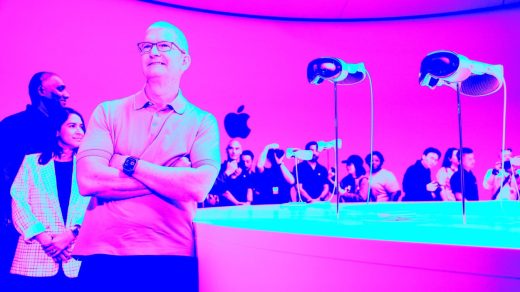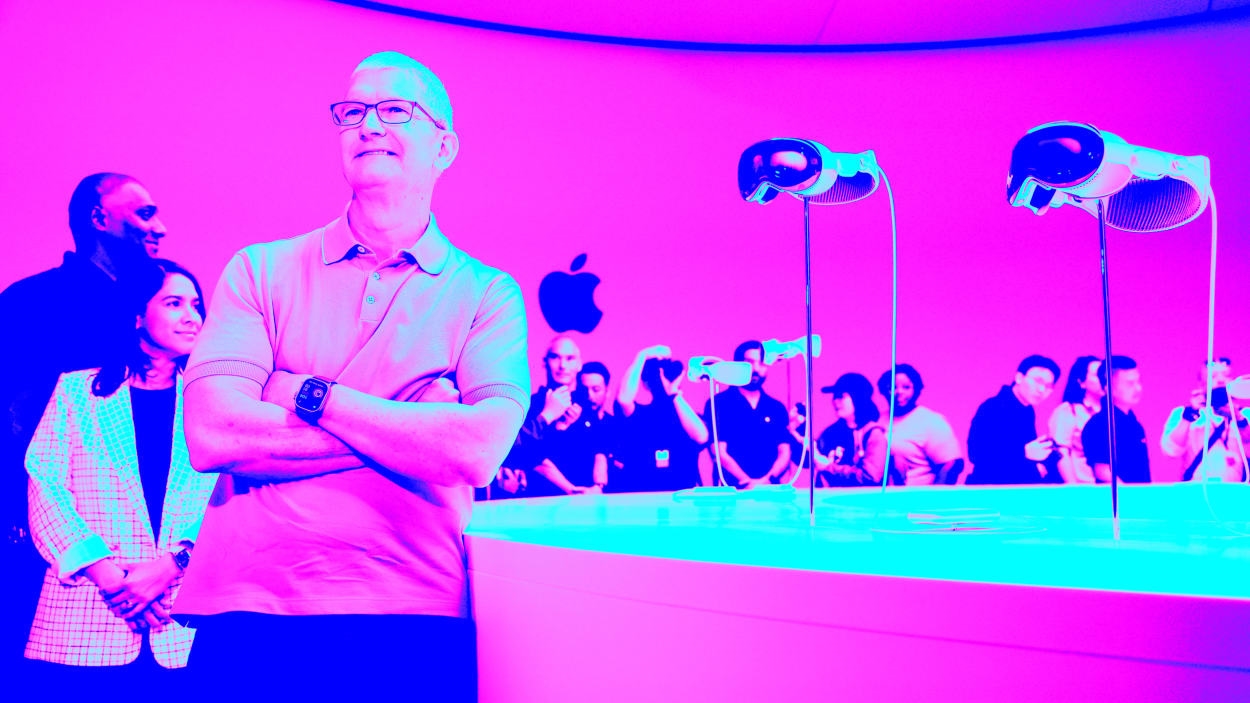Why the Apple Vision Pro’s price is so @#$%&! hard to judge
Just over 47 years ago, a tiny garage startup called Apple Computer released its first product, the Apple-1 microcomputer. It sold for $666.66—a price that Steve Wozniak has explained he and fellow Apple cofounder Steve Jobs chose because repeating digits are cool, and it represented a markup of about one-third the cost of the new machine’s parts.
The cost of Apple’s first gadget came to my mind as I pondered the price of the Apple Vision Pro headset, announced last week at Apple’s WWDC event. After accounting for inflation, the Apple-1 would cost $3,554.31 in 2023 dollars, according to the U.S. Inflation Calculator. That’s $55.31 more than the Vision Pro, a similarity I tweeted after the WWDC keynote.
I meant for this observation—Apple’s oldest and newest products selling for nearly the same effective price!—to be kinda funny and kinda serious. I still find it amusing. But as I thought it over, I realized that when it comes to computers, adjusting for inflation only confuses matters. This isn’t like the price of a Big Mac, which remains pretty much the same burger whether you paid 75¢ for it in 1976 or $5.79 (the price at my neighborhood McDonald’s) in 2023. Instead, the inexorable power of Moore’s Law defines the Apple-1 and Vision Pro’s relative value propositions far more than the declining value of the American dollar.
If you happen to have a vintage Apple-1 stashed away, you can sell it for hundreds of thousands of dollars as a rare collectible. But it’s hard to tease any meaning out of its theoretical inflation-adjusted 2023 price of $3,563.26—especially since the necessary components have become so cheap that you can buy a faithful Apple-1 clone for $185.
And here’s my favorite utterly meaningless inflation-adjusted Vision Pro factoid: It would have cost $107,249.55 if you’d bought one in 1913.
Despite the incongruity of such comparisons, the sticker shock of the Vision Pro’s $3,499 did leave me thinking back to the early days of PCs, when their impact on work and life was pretty radical, and so paying several thousand dollars for one was far more routine than it is today. Apple is pitching its headset’s debut as ushering in the era of spatial computing. Is this a comparable moment, when a steep price tag makes perfect sense, given the significance of the product in question?
That’s still up for debate. When I tweeted a receipt for the TRS-80 Model III computer my father bought for $3,028.18 (after a $664.72 academic discount) in 1981, it sparked a lively conversation about whether the Vision Pro will be as transformative as the early PCs were for those who bought them. For the record, my dad’s Model III was not a life-changing upgrade over his first TRS-80, which he’d purchased in 1978. But the bigger point remains: As rudimentary as early PCs now look, they were a vast improvement on no PC at all.
Apple’s first blockbuster computer, the Apple II, started at $1,298 when it debuted in 1977—a price that more than doubled once you equipped it with a decent quantity of RAM, a display, and a floppy disk drive or two. Having just helpfully explained that adjusting old computer prices for inflation is pointless, I’m not going to tell you how much an Apple II would cost in 2023 dollars. But you get the idea: It was a major investment for those who bought one. (At the time, you could buy a new car, such as a Chevy Chevette, for $3,000.)
Among the Apple II’s many claims to fame is that it was the first computer to run Dan Bricklin and Bob Frankston’s VisiCalc—not just the first spreadsheet, but the first software of any type that was widely regarded as being so useful that it was worth buying a computer to get access to it. Even today, it remains the iconic example of a killer app.
But here’s a not-so-well-remembered fact about VisiCalc: It didn’t ship until October 1979, more than two years after the Apple II was announced. Which means that the earliest Apple II buyers splurged on their machines before it was entirely clear how big its impact on their lives would be.
Pundits are already forming strong opinions about whether spending $3,499 on a Vision Pro when it goes on sale early next year will be prudent. Many of those assessments—like this, this, and this—are resoundingly negative. Oddly enough, however, the journalists who actually tried the headset at WWDC didn’t necessarily form a better idea of what its price-justifying killer apps might be. Or at least I didn’t come away with one, and many of the other people who wrote about their experiences were similarly uncertain.
With months to go before anyone can buy a Vision Pro, it’s possible that its worth will be easier to judge by the time lines of early adopters are forming outside Apple Stores. But it could also be a couple of years until we understand whether it’s a pricey doorstop or—for certain people—worth every dollar of that imposing price tag and more. Keep that in mind any time someone tells you they already know the answer.
This story is from Fast Company’s Plugged In newsletter, a weekly roundup of tech insights, news, and trends from global technology editor Harry McCracken, delivered to your inbox every Wednesday morning. Sign up for it here.
(12)



